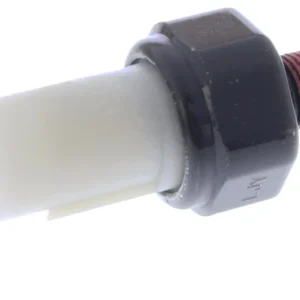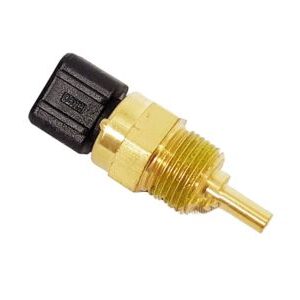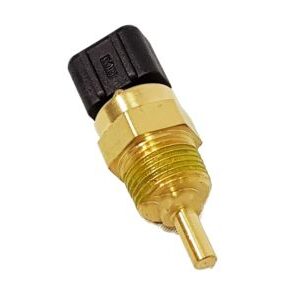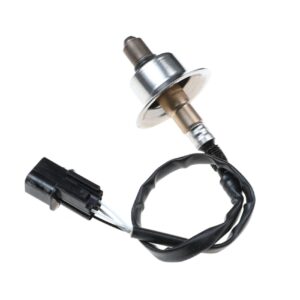Title: Timing Perfection: The TDC Sensor’s Role in Engine Precision
Introduction:
In the intricate symphony of engine operation, precise timing is paramount. At the heart of this timing precision lies a small yet indispensable component—the Top Dead Center (TDC) sensor. Often overlooked but crucial to engine performance, the TDC sensor plays a pivotal role in accurately determining the position of the engine’s pistons and ensuring optimal timing for combustion. In this blog, we’ll explore the world of TDC sensors, uncovering their function, importance, and the vital role they play in modern engine management systems.
Understanding the TDC Sensor:
The Top Dead Center (TDC) sensor, also known as the cylinder position sensor or crankshaft position sensor, is a sophisticated electronic device positioned near the crankshaft or camshaft of an engine. Its primary function is to detect the position of the pistons relative to the top dead center position, providing crucial data to the engine control unit (ECU) or powertrain control module (PCM).
Functionality:
But how does the TDC sensor operate? As the engine rotates, the TDC sensor detects the movement and position of the pistons, specifically identifying when a piston reaches the top dead center of its stroke. It generates electrical signals based on these movements, which are then transmitted to the ECU or PCM. This real-time data allows the engine management system to precisely control ignition timing, fuel injection, and other critical engine functions.
Importance:
The significance of TDC sensors in modern engines cannot be overstated. These unassuming components serve as the engine’s timing guardians, ensuring precise alignment of pistons and camshafts for optimal combustion and performance. By providing accurate data on piston position, TDC sensors enable the engine management system to maintain smooth operation, prevent misfires, and optimize fuel efficiency.
Key Functions of TDC Sensors:
1. Piston Position Detection: The primary function of TDC sensors is to detect the position of the pistons relative to the top dead center position, providing real-time data to the engine management system.
2. Ignition Timing Control: TDC sensors allow the ECU or PCM to precisely control ignition timing, ensuring optimal combustion and engine performance.
3. Valve Timing Control: By monitoring piston position, TDC sensors facilitate synchronized valve timing, optimizing engine efficiency and power output.
4. Misfire Detection: TDC sensors help identify misfires by detecting irregularities in piston position, allowing the engine management system to take corrective action.
Maintenance and Replacement:
Proper maintenance of TDC sensors is essential to ensure accurate readings and reliable engine performance. Over time, TDC sensors may become contaminated with oil, debris, or electrical residue, leading to inaccurate readings or failure. Regular inspection, cleaning, and testing of TDC sensors as part of routine maintenance can help prevent issues and ensure proper function. If problems arise, such as engine hesitation or difficulty starting, professional diagnosis and replacement of the TDC sensor may be necessary to restore proper operation.
Conclusion:
In conclusion, TDC sensors may be small in size, but their impact on engine performance and efficiency is profound. As the engine’s timing guardians, TDC sensors provide crucial data on piston position, enabling the engine management system to optimize timing, fuel delivery, and overall operation. So, the next time you marvel at your vehicle’s smooth acceleration and responsive power delivery, remember the silent sentinel ensuring precision—the TDC sensor.
Only 5 left in stock (can be backordered)
$29,137.67
Title: Timing Perfection: The TDC Sensor’s Role in Engine Precision
Introduction:
In the intricate symphony of engine operation, precise timing is paramount. At the heart of this timing precision lies a small yet indispensable component—the Top Dead Center (TDC) sensor. Often overlooked but crucial to engine performance, the TDC sensor plays a pivotal role in accurately determining the position of the engine’s pistons and ensuring optimal timing for combustion. In this blog, we’ll explore the world of TDC sensors, uncovering their function, importance, and the vital role they play in modern engine management systems.
Understanding the TDC Sensor:
The Top Dead Center (TDC) sensor, also known as the cylinder position sensor or crankshaft position sensor, is a sophisticated electronic device positioned near the crankshaft or camshaft of an engine. Its primary function is to detect the position of the pistons relative to the top dead center position, providing crucial data to the engine control unit (ECU) or powertrain control module (PCM).
Functionality:
But how does the TDC sensor operate? As the engine rotates, the TDC sensor detects the movement and position of the pistons, specifically identifying when a piston reaches the top dead center of its stroke. It generates electrical signals based on these movements, which are then transmitted to the ECU or PCM. This real-time data allows the engine management system to precisely control ignition timing, fuel injection, and other critical engine functions.
Importance:
The significance of TDC sensors in modern engines cannot be overstated. These unassuming components serve as the engine’s timing guardians, ensuring precise alignment of pistons and camshafts for optimal combustion and performance. By providing accurate data on piston position, TDC sensors enable the engine management system to maintain smooth operation, prevent misfires, and optimize fuel efficiency.
Key Functions of TDC Sensors:
1. Piston Position Detection: The primary function of TDC sensors is to detect the position of the pistons relative to the top dead center position, providing real-time data to the engine management system.
2. Ignition Timing Control: TDC sensors allow the ECU or PCM to precisely control ignition timing, ensuring optimal combustion and engine performance.
3. Valve Timing Control: By monitoring piston position, TDC sensors facilitate synchronized valve timing, optimizing engine efficiency and power output.
4. Misfire Detection: TDC sensors help identify misfires by detecting irregularities in piston position, allowing the engine management system to take corrective action.
Maintenance and Replacement:
Proper maintenance of TDC sensors is essential to ensure accurate readings and reliable engine performance. Over time, TDC sensors may become contaminated with oil, debris, or electrical residue, leading to inaccurate readings or failure. Regular inspection, cleaning, and testing of TDC sensors as part of routine maintenance can help prevent issues and ensure proper function. If problems arise, such as engine hesitation or difficulty starting, professional diagnosis and replacement of the TDC sensor may be necessary to restore proper operation.
Conclusion:
In conclusion, TDC sensors may be small in size, but their impact on engine performance and efficiency is profound. As the engine’s timing guardians, TDC sensors provide crucial data on piston position, enabling the engine management system to optimize timing, fuel delivery, and overall operation. So, the next time you marvel at your vehicle’s smooth acceleration and responsive power delivery, remember the silent sentinel ensuring precision—the TDC sensor.




Get E-mail updates about our latest products and special offers.
Sensors and More is Jamaica’s ultimate online auto parts store. Established in 2020, we specialize in genuine electrical parts for Japanese, Read more…
Reviews
There are no reviews yet.